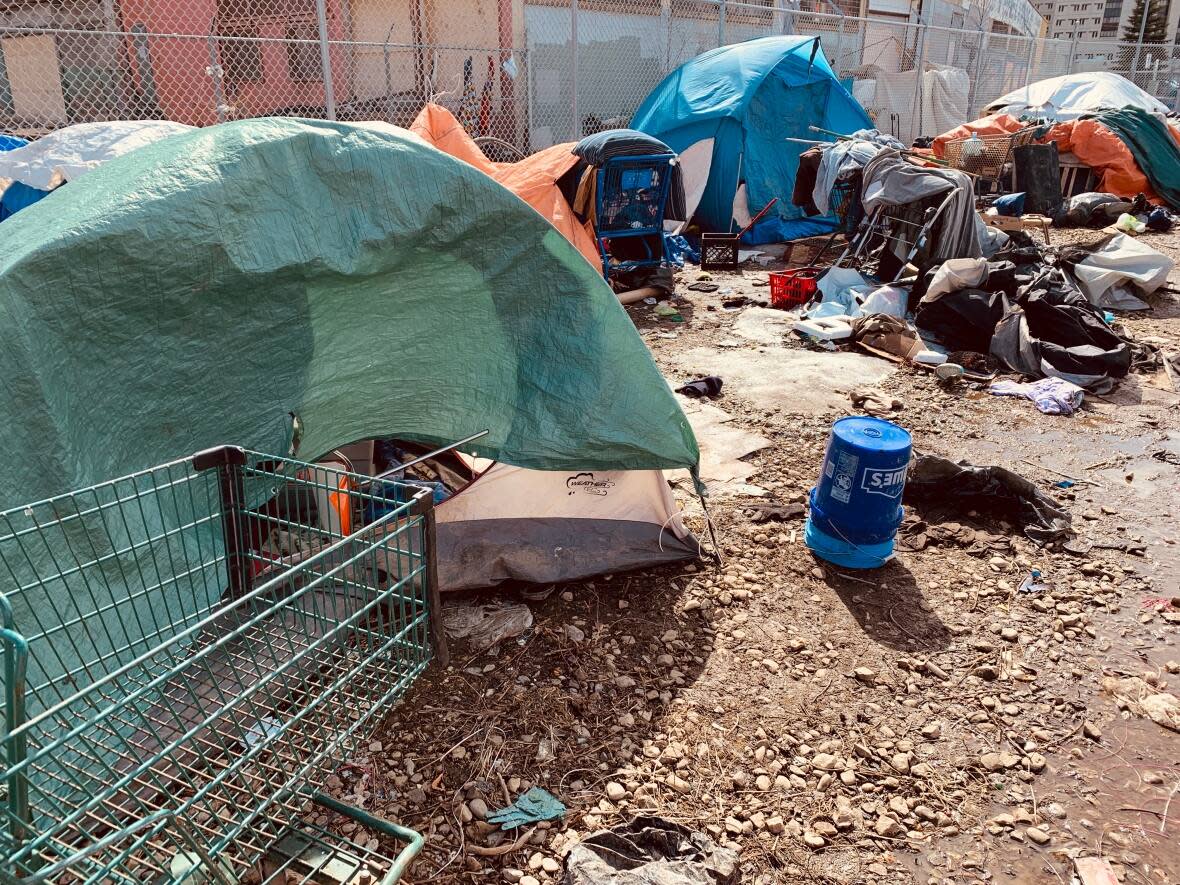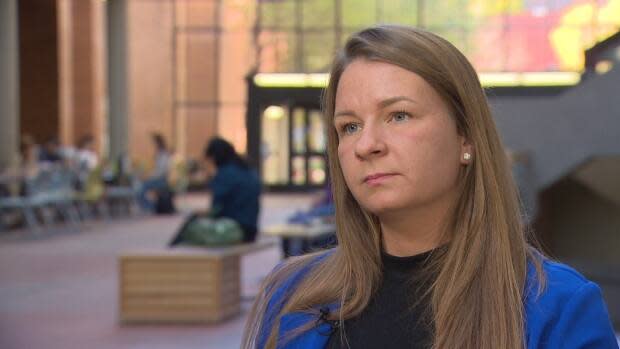Gang violence among threats to safety for Edmonton homeless population, says researcher

People living on Edmonton's streets in the city's core believe it's become an increasingly dangerous place, says a University of Alberta researcher.
In March and February, U of A assistant professor of sociology and criminology Marta-Markia Urbanik and colleagues from the University of Winnipeg and Athabasca University interviewed 45 people experiencing homelessness about violence, social disorder and drug use in the downtown and Chinatown neighbourhoods.
Urbanik said the people they spoke with feel that downtown Edmonton has changed since pre-pandemic – and that it's made them less safe.
"They do not like what has been happening downtown. They do not like the fact that there is a subset of the community that is causing crime disorder, greater concerns and issues, including on the LRT," Urbanik said Wednesday. "They believe that downtown, the Chinatown community, and the LRT should be safe for everyone. And they would like to feel safe on there as well."
Urbanik said that their data analysis is still underway, but that they spoke with 16 women and 29 men, all of whom are unhoused and who use substances. She said some of them use shelters, but many were staying outdoors.
She said some respondents were involved with the "informal economy" – including people who have been involved in criminal activity and gang members.
She said the goal of this work is to help inform policy and add nuance to discussions of public safety by including the perspectives of people who are most at risk of violence.
The data gathered has not yet been published, but Urbanik said they are sharing preliminary information as quickly as possible with organizations who are interested in it, and said they have already sent some findings to the city.
Main findings
Urbanik said the people they spoke to believed three main elements are contributing to safety issues: the increase in the number of people who are homeless, gang activity and deterioration of the "street code", and the toxicity of the drug supply.

Between October 2019 and October 2021, the number of people who are homeless in Edmonton doubled, from about 1,390 to 2,811.
In March, there were 2,843 people experiencing homelessness in Edmonton, including 757 who were unsheltered – meaning, they frequently sleep outside.
Urbanik said that while it's usually a small number of people in the unhoused community who engage in violence and crime, as the overall population has grown so has that segment.
There's also been a deterioration of the "street code," Urbanik said. She said previously there was an expectation that people who are homeless won't steal or harm each other – but that isn't true anymore.
She said she was also told that there is infighting within a large street gang downtown, and that leaders who previously had power and control have lost it
"Whenever we have gang disintegration, many of us believe that this is good and this is going to reduce crime and violence," Urbanik said. "But what we see is that, at least in the short term, internal gang fighting can actually exacerbate crime, violence and produce uncertainty in the streets."
She added that there is also a perception that the drug supply in the city has changed, and that is prompting more violent or disorderly behaviour.
Urbanik's work comes amidst public debate about how best to address an increase in homelessness, and issues of social disorder downtown and on public transit.
Debate about encampments
On Tuesday, city council's community and public services committee discussed its plan for dealing with encampments by getting people into housing.
The committee also heard a proposal from non-profit group MAPS Alberta, which is advocating for small, Indigenous-led camps for people to live in while transitioning to housing.
Marlene Mulder, the lead researcher on MAPS's recent report on homelessness in Edmonton, said Wednesday that safety issues came up in her group's findings as well, particularly for young women.
She described an interview with a 22-year-old woman who was sleeping under a bridge because a tent – with only one way in and out — would be unsafe for her.
Mulder said she was also told that sleeping in hedges near a downtown grocery store was a preferred spot because security guards would likely hear and come over if you were attacked.
She said many young women opt to spend time south of the river in the Strathcona area because they find it safer than downtown.


